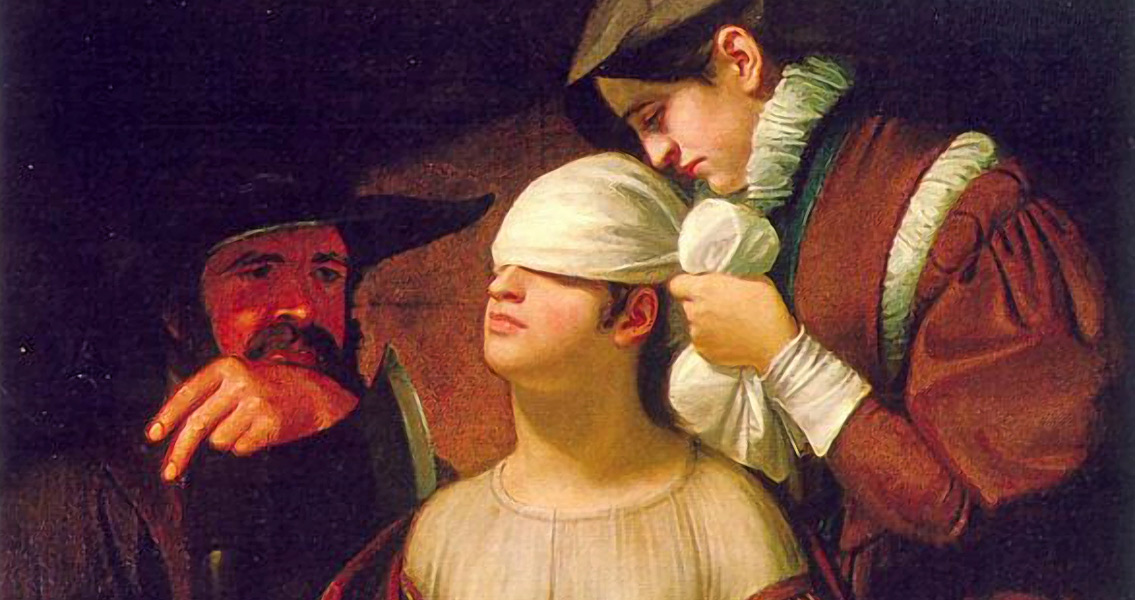<![CDATA[A sixteen year old Queen of England was beheaded in the Tower of London on 12th February, 1554. With a reign that lasted just nine days, the fate of Lady Jane Grey remains one of the most unusual stories from the Tudor period - a tragic tale of circumstance in which a woman was bequeathed a tenuous claim to the throne and then executed as a result. Recently however, some historians have started to question the conventional narrative that Lady Jane Grey was a mere victim of the elaborate system of her time and in particular the ambitions of her father in law. Instead, they argue she was an active participant in the ruthless world of Tudor politics. Rather than an innocent girl pulled into the political game, she was a just as cynical player of the system as those around her. The details around Jane's involvement in royal politics are complicated, symptomatic of a time when genetics were deeply political, and power was often consolidated through execution. Born in 1537, Jane was the daughter of the Marquess of Somerset, Lady Frances Brandon, and Henry Grey, the Duke of Suffolk. Through the maternal line she was the great-granddaughter of King Henry VII. Although a significant connection to royalty, it was one which seemed incredibly tenuous, especially in a hierarchical system that was still deeply patriarchal. Gradually, Jane became involved in the royal court, forming the relationships which would see her crowned queen and then eventually executed. At age ten she entered the household of Henry VIII's last wife, Catherine Parr. She was educated in a strongly Protestant environment, and quickly showed a particular aptitude at learning languages. She forged a reputation as a pious, sincere follower of the Church of England. Baron Seymour of Sudeley took Jane on as a ward, and attempted to arrange a marriage between her and Edward VI, the King of England. The plan ultimately failed, and Seymour was executed for treason in 1549. Following Seymour's death, Jane moved into the circle of John Dudley, a highly influential but divisive figure in King Edward's Privy Council. Holding the rank of the Duke of Northumberland, Dudley wielded significant power and influence, serving as the king's chief adviser. With this influence, Dudley had also created a host of enemies. In 1553 Grey married Dudley's son, Lord Guildford Dudley. She now had access to all the privileges, and all of the risks of association with the Dudley name. The Duke of Northumberland managed to persuade Edward VI to change the line of succession, making Jane Grey the heir by declaring the King's sister Mary Tudor illegitimate. It seems that Edward was persuaded by Mary's Catholicism, in particular a fear her ascension to the throne would cause a strengthening of the religion in Britain. For the power hungry Duke of Northumberland, it meant his son was married to the heir to the throne. Lady Jane was proclaimed Queen on 10th July, 1553. By 19th July her reign was over. Surprisingly, the people of England rallied around Mary Tudor, likely inspired by her iconic surname which was synonymous with decades of stability in the country, and widespread dissatisfaction with the Duke of Northumberland's substantial political influence. Mary formed a sizable army, allowing her to seize the throne. Jane was taken away to the Tower of London. The Duke of Northumberland attempted to launch a rescue, but his army deserted him, possibly fearing a Tudor backlash. The next year Jane's father played a part in the Thomas Wyatt Rebellion against Queen Mary, again worsening Jane's cause. Lady Jane and her husband were eventually convicted of treason and sentenced to death, with Jane's execution coming on 12th February, 1554. Romantic paintings of Lady Jane have furthered the image of her as a sweet, innocent victim of the ambitions of those around her, with depictions often showing her wearing white, and emphasising her youthfulness. There is almost certainly an element however, of this idealised image reflecting a Protestant bias and the hindsight of the horrors of Mary's reign. Lady Jane had publicly condemned Catholicism as Queen, and continued to do so vocally while imprisoned, something which surely brings into question the sweet, naive image of her. While Queen, she signed documents in her own name, a means to assert her independence from the Dudley's, and insisted her husband would not be made king but a duke. Again, marks of strength that bring into question the image of her being a naive pawn. Lady Jane was undoubtedly young when she died, but she might not have been so innocent.]]>
Teenage Queen Beheaded – Lady Jane Grey's Death
